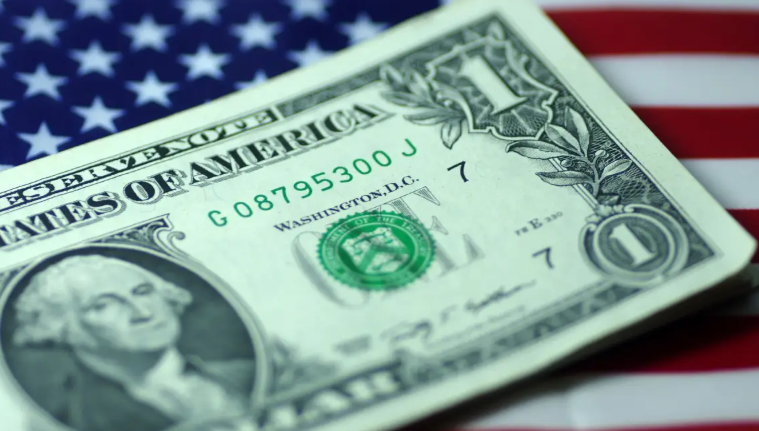Dollar Index Rebounds and Closes Higher
Advertisements
In recent weeks, the European economic landscape has witnessed intriguing shifts, particularly in the Eurozone where inflationary pressures have shown a notable increase. According to recent reports from the European Statistics Agency, the Harmonized Consumer Price Index (HICP) in December experienced a year-on-year rise of 2.4%. This marks an uptick from November’s rate of 2.2%, aligning closely with market expectations. Moreover, the core HICP, which excludes volatile items like energy and food, remained steady at a 2.7% increase, mirroring the previous month. On a month-to-month basis, December saw a significant rebound in HICP, climbing by 0.4%, with core HICP witnessing a 0.5% rise compared to November's decline of 0.6%. Analyzing the contributing factors reveals that the services sector led the annual inflation rates, achieving a peak of 4.0%, slightly up from 3.9% in November.
The food, alcohol, and tobacco sectors followed with a consistent inflation rate of 2.7%, while non-energy industrial goods posted a modest increase of 0.5%. Energy, still a significant gear in the inflation machinery, showed a sharp increase, climbing to 0.1%, compared to the disconcerting -2.0% from the previous month. This acceleration in inflation can be primarily attributed to rising energy costs, which, coupled with existing deflationary pressures in the economy, complicates the financial landscape. In an attempt to combat these evolving economic challenges, the European Central Bank (ECB) has proposed continued interest rate cuts aimed at stimulating growth. However, the unpredictability surrounding energy prices and trade tariffs adds layers of uncertainty to the Eurozone's economic prospects.
Across the Atlantic, the U.S. labor market presented an optimistic narrative as revealed in the latest job openings and labor turnover survey, released on Tuesday by the Bureau of Labor Statistics. The number of job vacancies rose from a previously adjusted 7.8 million in October to an impressive 8.1 million in November, exceeding the forecasts from Bloomberg’s economist survey. This increase was primarily driven by growth in professional and business services as well as the finance and insurance sectors. In contrast, there was a noticeable decline in job vacancies within the accommodation, food services, and manufacturing industries. This reversal from a downward trend that had persisted for nearly three years alleviates earlier fears of a deteriorating labor market, which had been a contributing factor in the Federal Reserve's series of interest rate cuts in previous months. Current data now paints a more robust labor market, while stubbornly high inflation mitigates expectations for further rate cuts by the Federal Reserve this year.

Today, attention turns to a variety of significant economic indicators: November's actual retail sales in Germany, December's Economic Sentiment Index for the Eurozone, and the finalized consumer confidence index for the Eurozone in December. In the U.S., markets are closely watching ADP employment change for December, weekly initial jobless claims for the week ending January 4, and the finalized month-over-month wholesale inventory data for November.
Turning to currency markets, the U.S. dollar index exhibited a rally amid a volatile trading environment yesterday, closing slightly higher as it continues to navigate the shifting dynamics of buyers and sellers. Currently trading around 108.60, the dollar's rebound can be attributed to a number of critical factors. Firstly, short-covering played a significant role, with many investors who had heavily shorted the dollar hastily unwinding their positions in response to changing market sentiment. This activity provided the dollar with formidable upward momentum and solid support. Secondly, technical analysis also provided a boost, as many traders, guided by chart signals and moving averages, jumped back into the market around the 108.00 level, collectively contributing to the dollar's rebound.
The macroeconomic backdrop further enhances the dollar's appeal. A dwindling expectation for interest rate cuts from the Federal Reserve has reinvigorated interest in dollar-denominated assets, with favorable U.S. economic data reinforcing this trend. Robust employment figures, a thriving service sector, and signs of recovery in manufacturing demonstrate the resilience of the U.S. economy, providing additional support to the dollar's value. Looking forward, the 109.00 level acts as a critical barrier for the dollar, while the support around 108.00 remains a firm defense point against potential declines.
Conversely, the euro experienced fluctuations, closing slightly down around 1.0350 yesterday due to profit-taking pressures coupled with the strengthening dollar. The rebound of the dollar index, fueled by short covering and lessened expectations of further rate cuts from the Federal Reserve, significantly impacted the euro's trajectory. Nonetheless, solid economic data from the Eurozone has placed a ceiling on the euro's decline. For today, traders will keep a close watch on resistance at around 1.0450, with support resting at 1.0250.
On the British front, the pound was not spared from the dollar's resurgence, experiencing a slight downturn and trading around 1.2480. Similar to the euro, the impact of profit-taking and the buoyant dollar was felt here too, along with weak economic indicators from the UK and speculation surrounding potential rate cuts by the Bank of England. Key levels to consider include resistance around 1.2550 and support close at 1.2400. In a landscape suffused with economic indicators and evolving geopolitical scenarios, traders and economists alike remain vigilant, interpreting these shifts while preparing for the anticipated movements in these currency pairs.